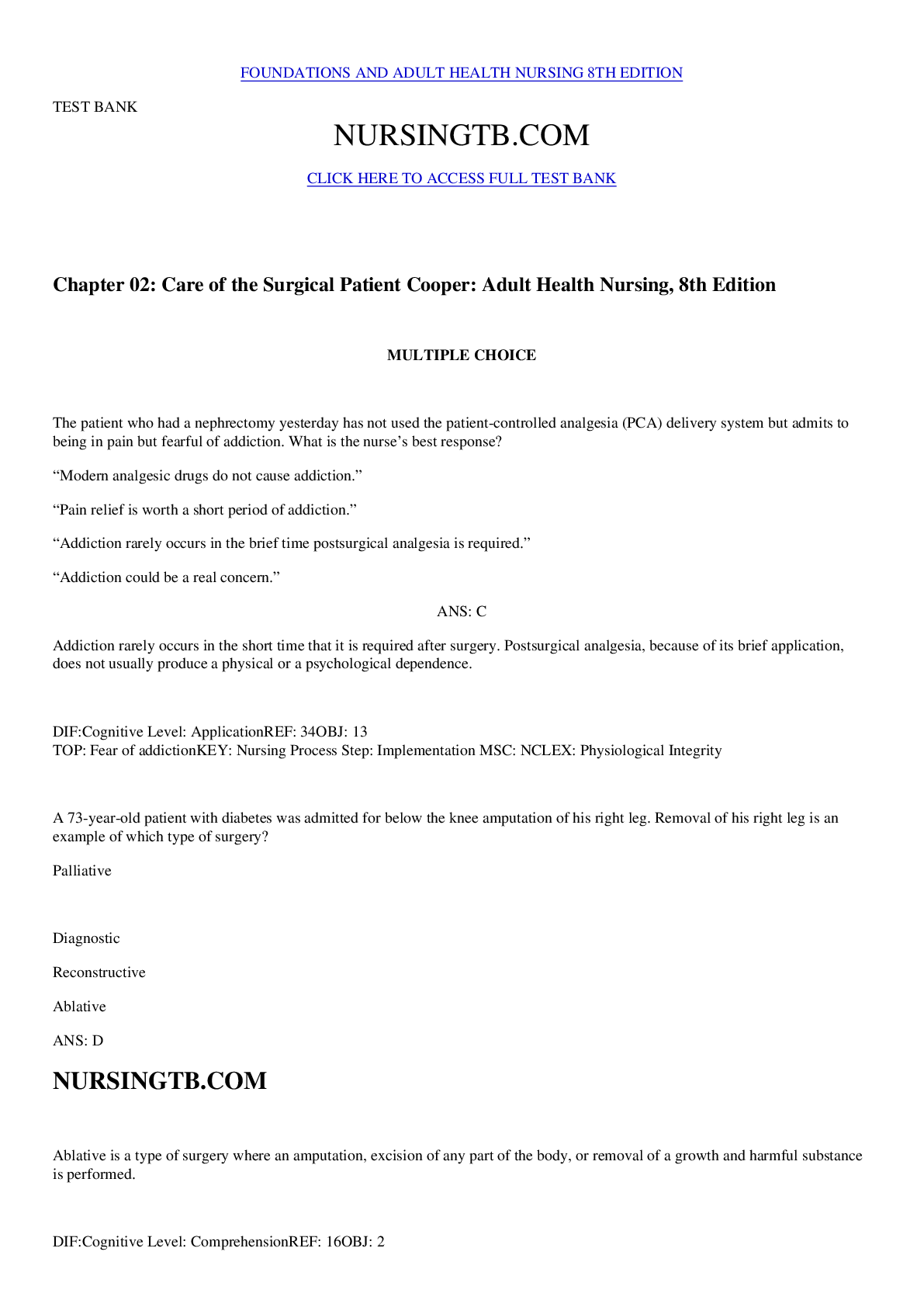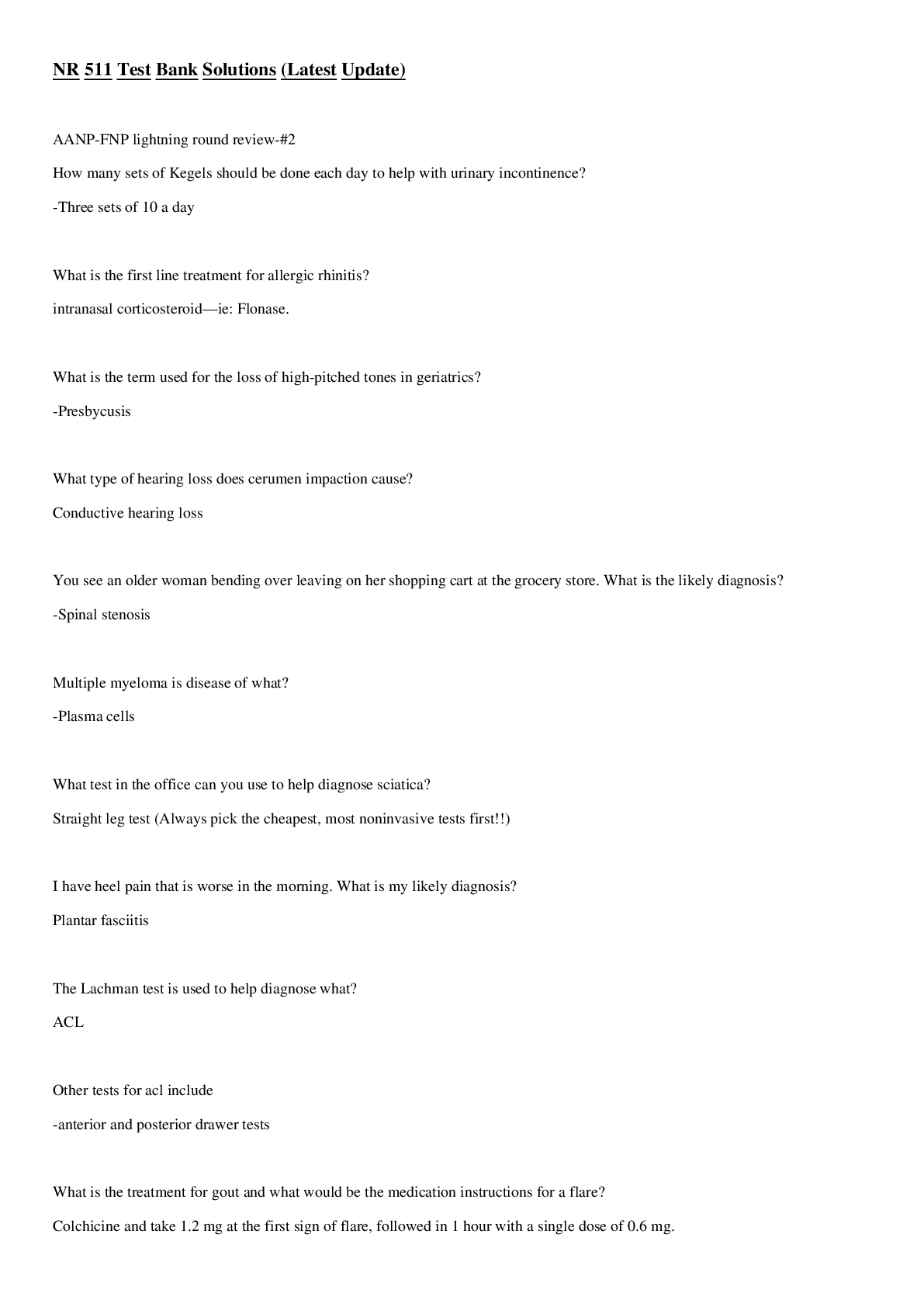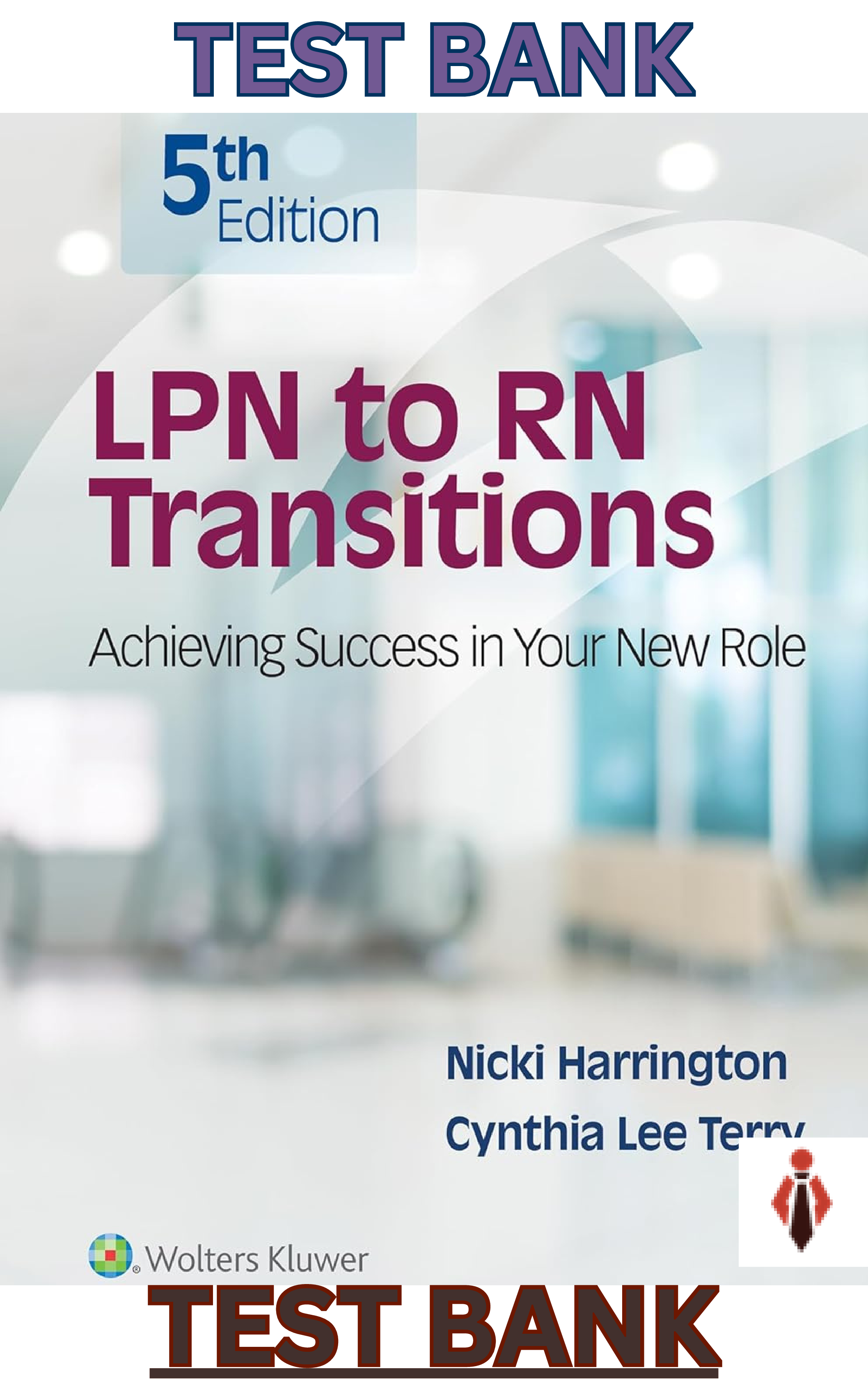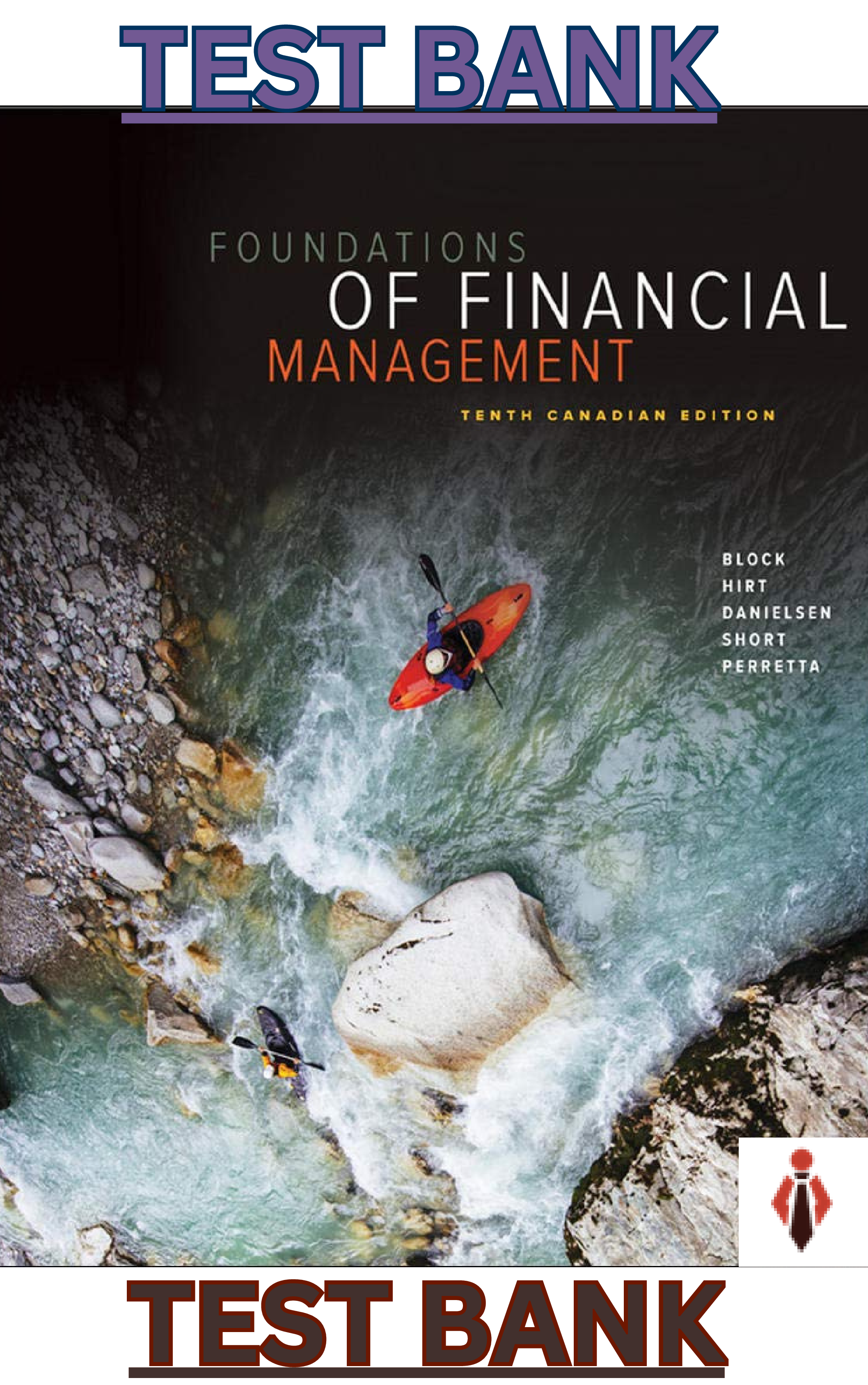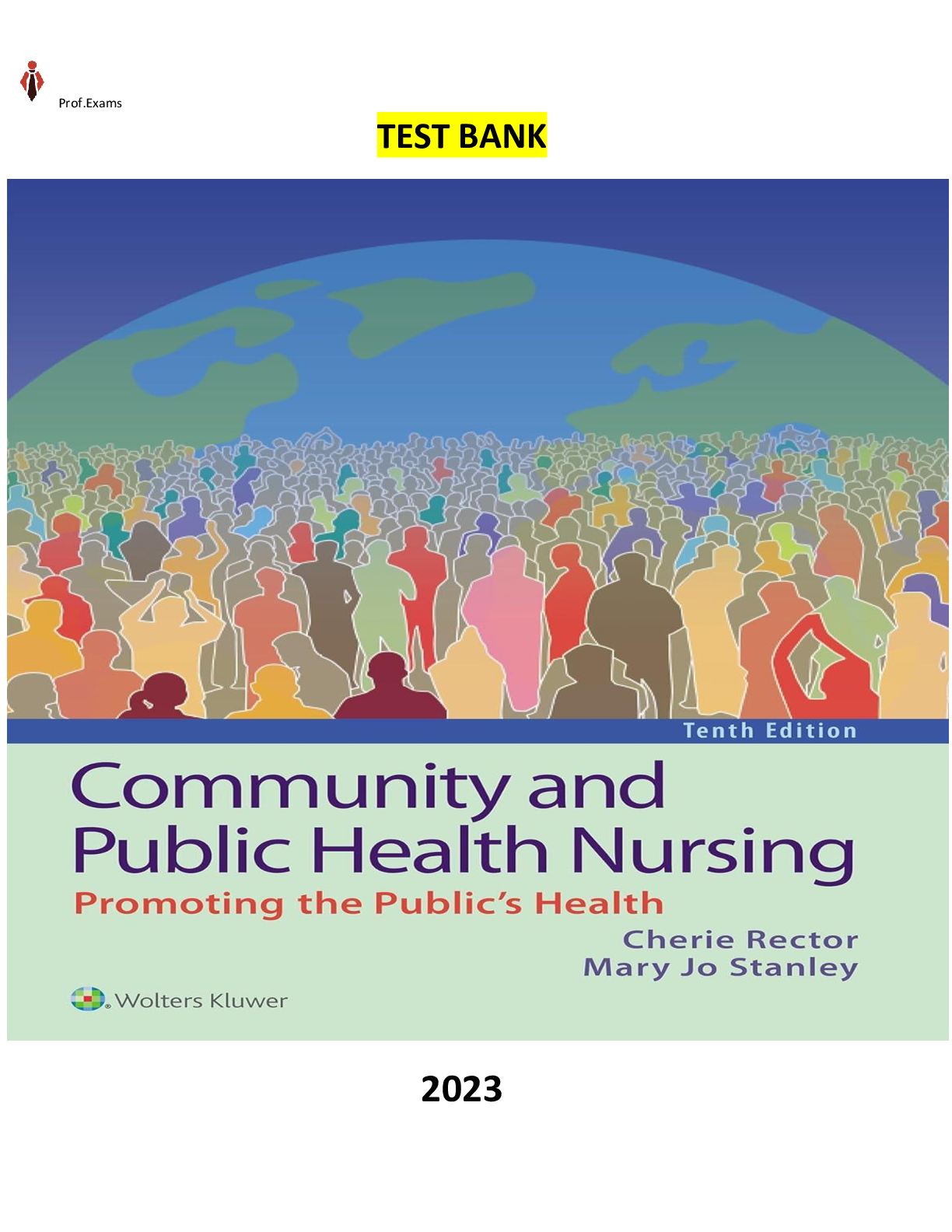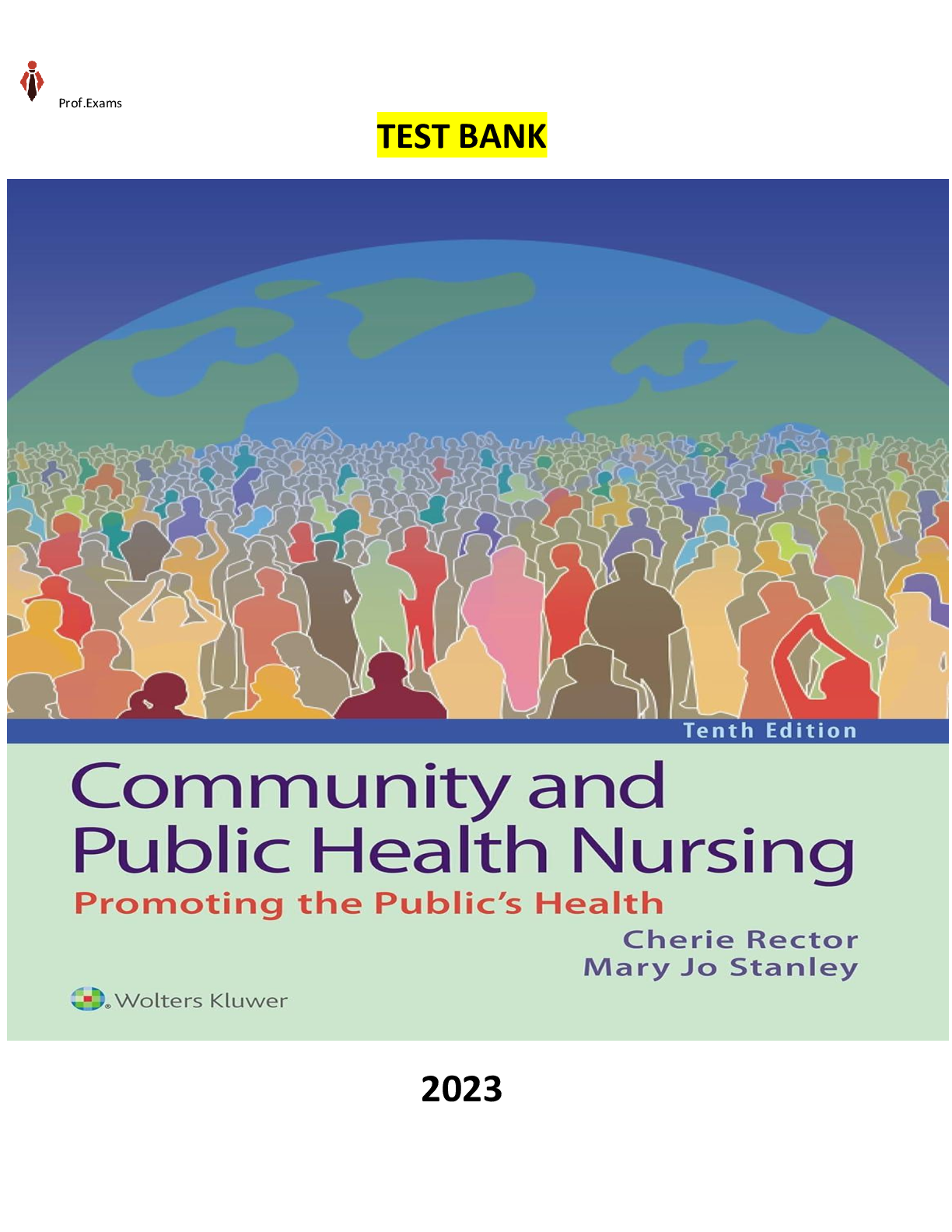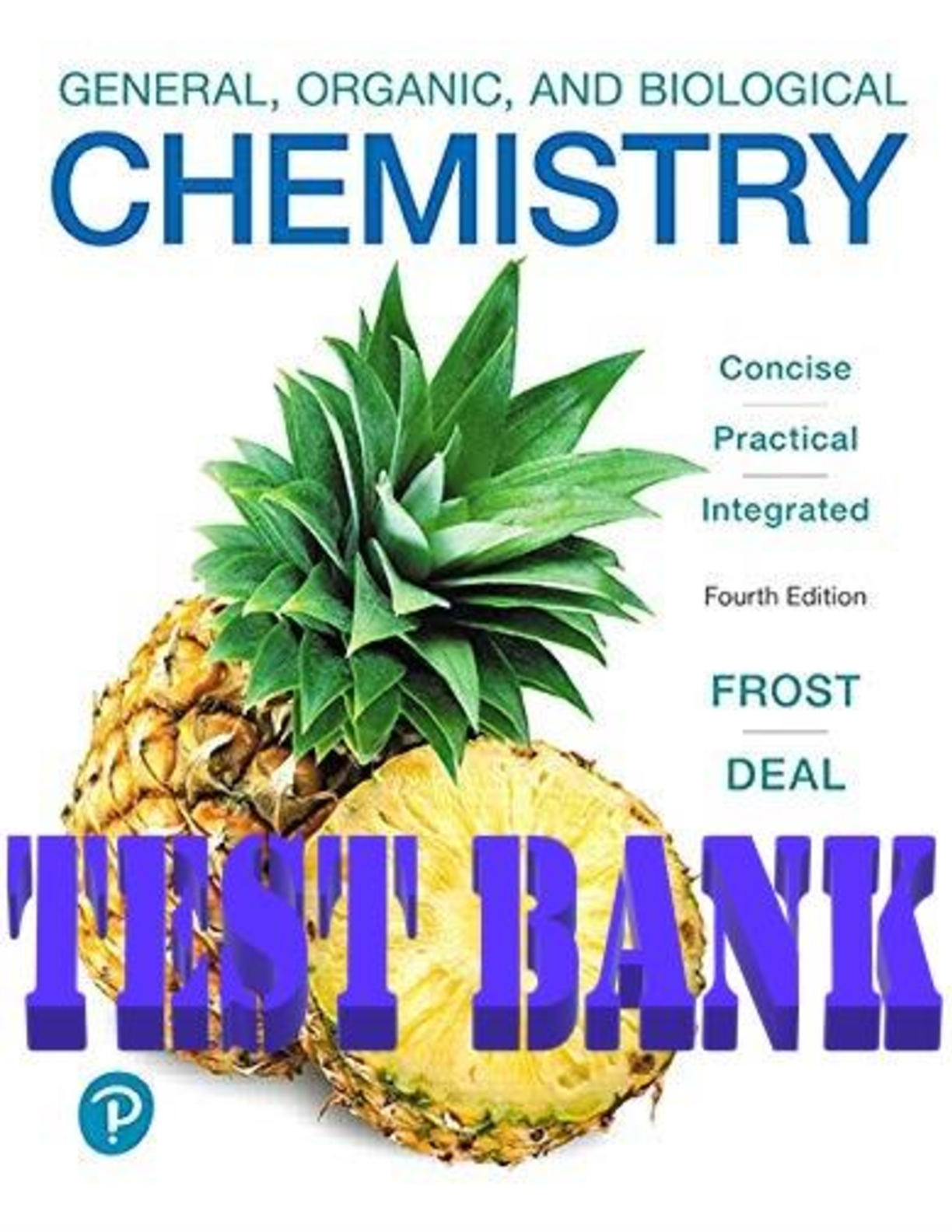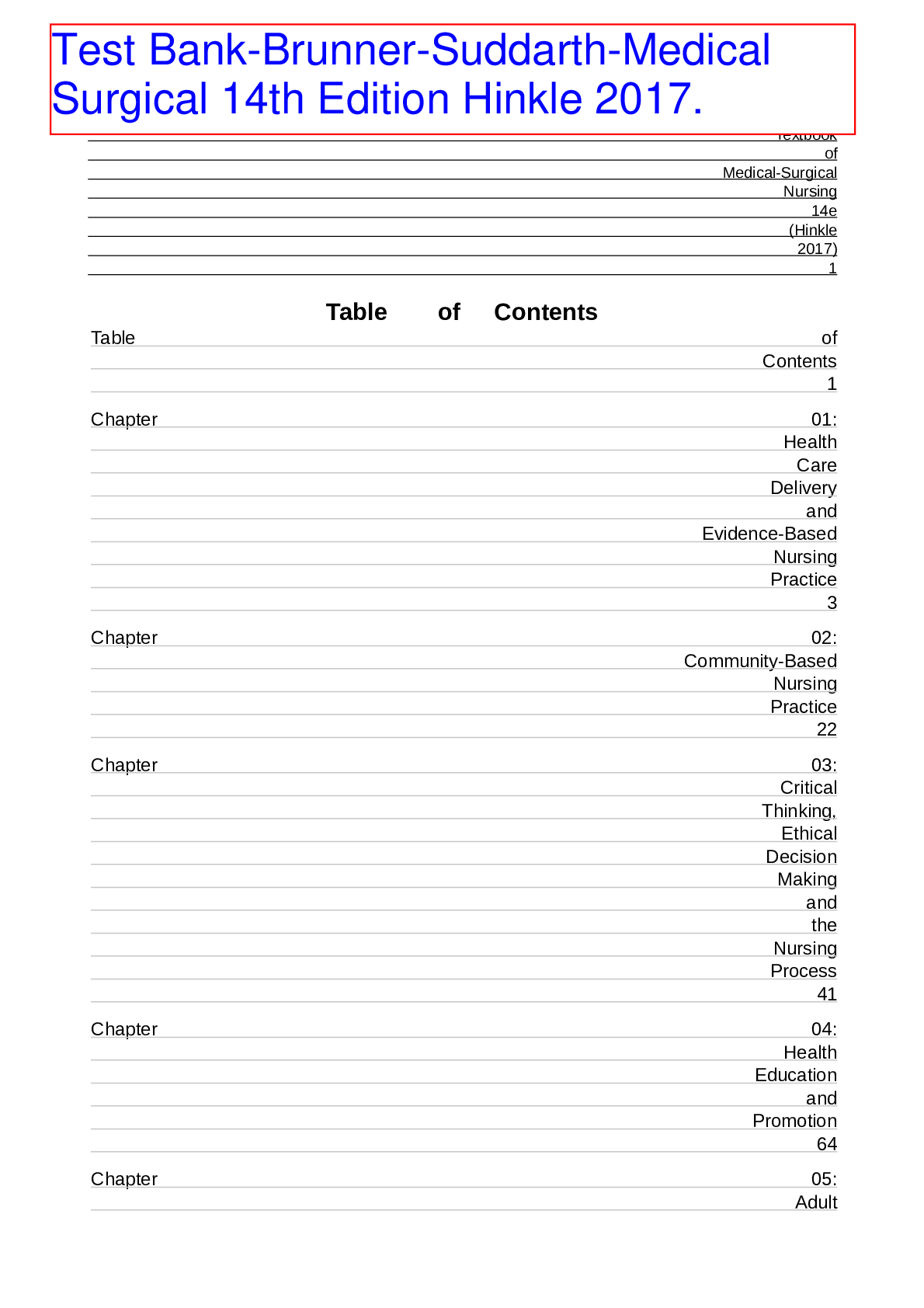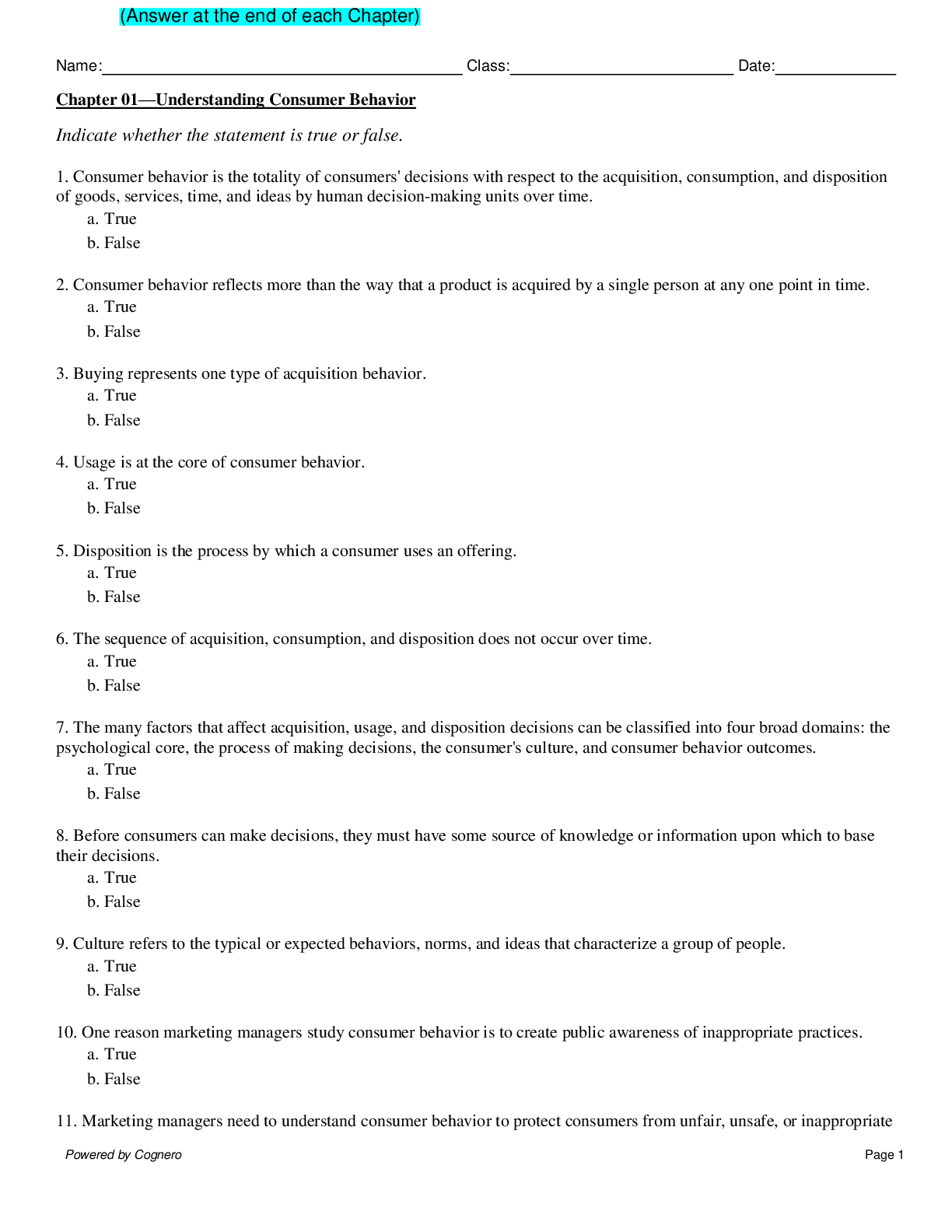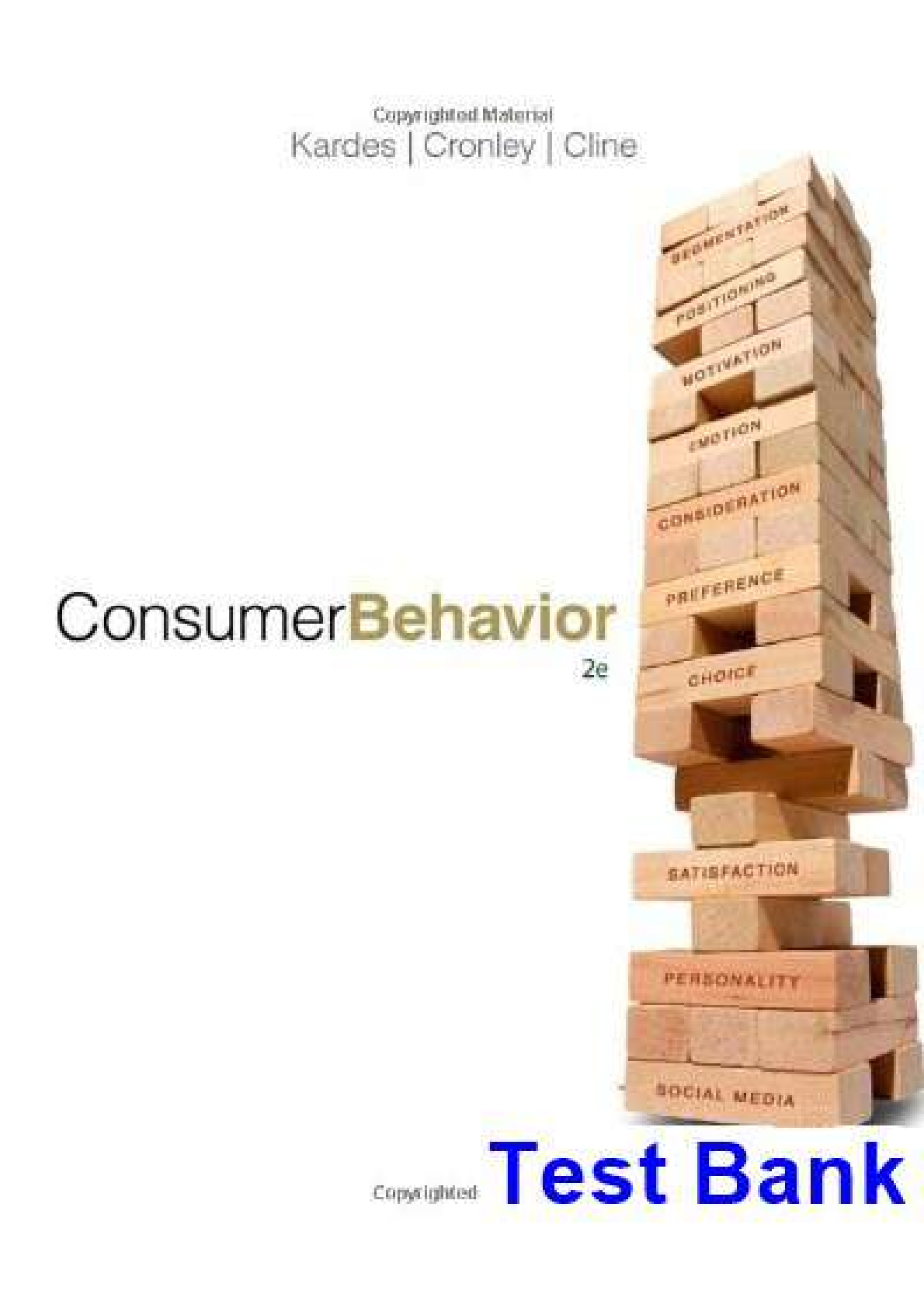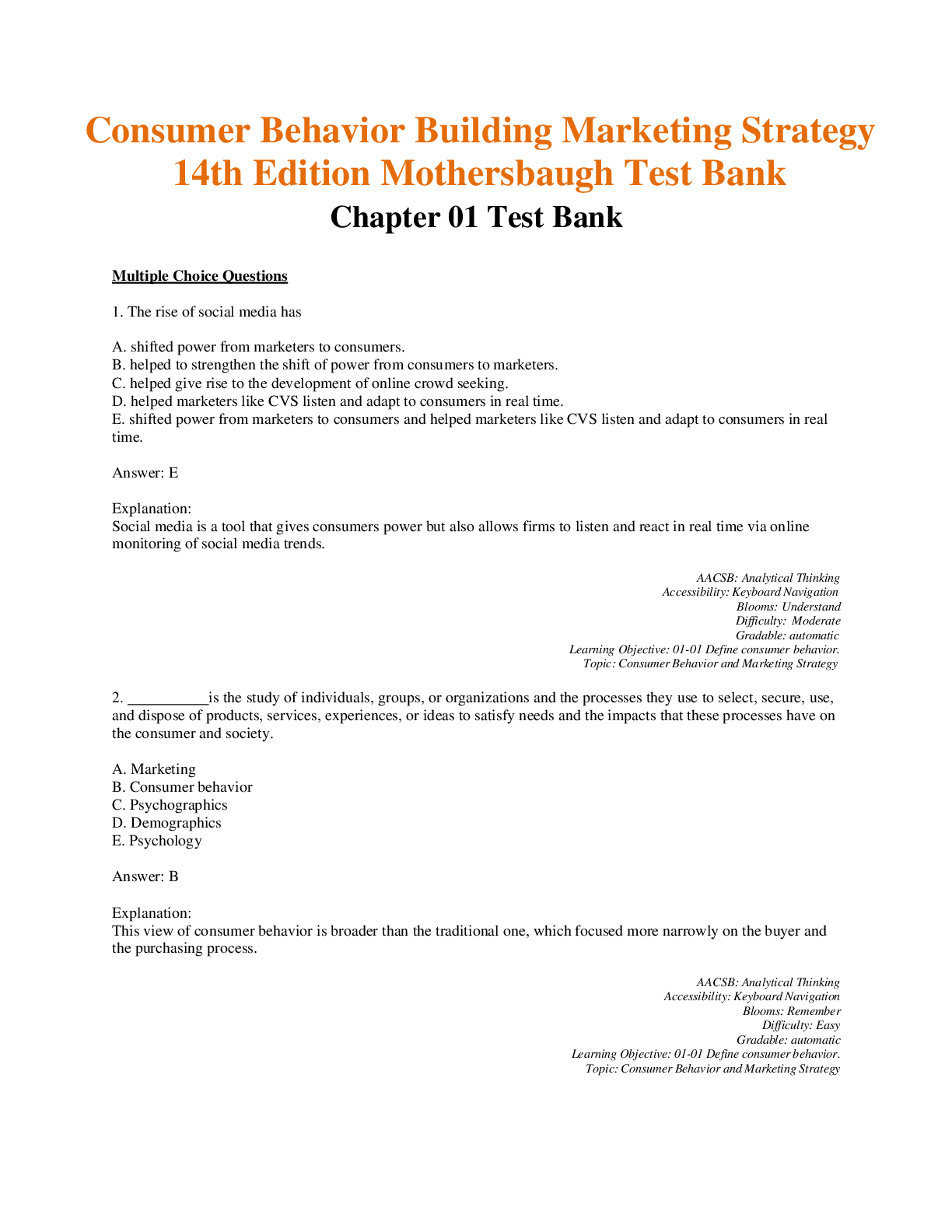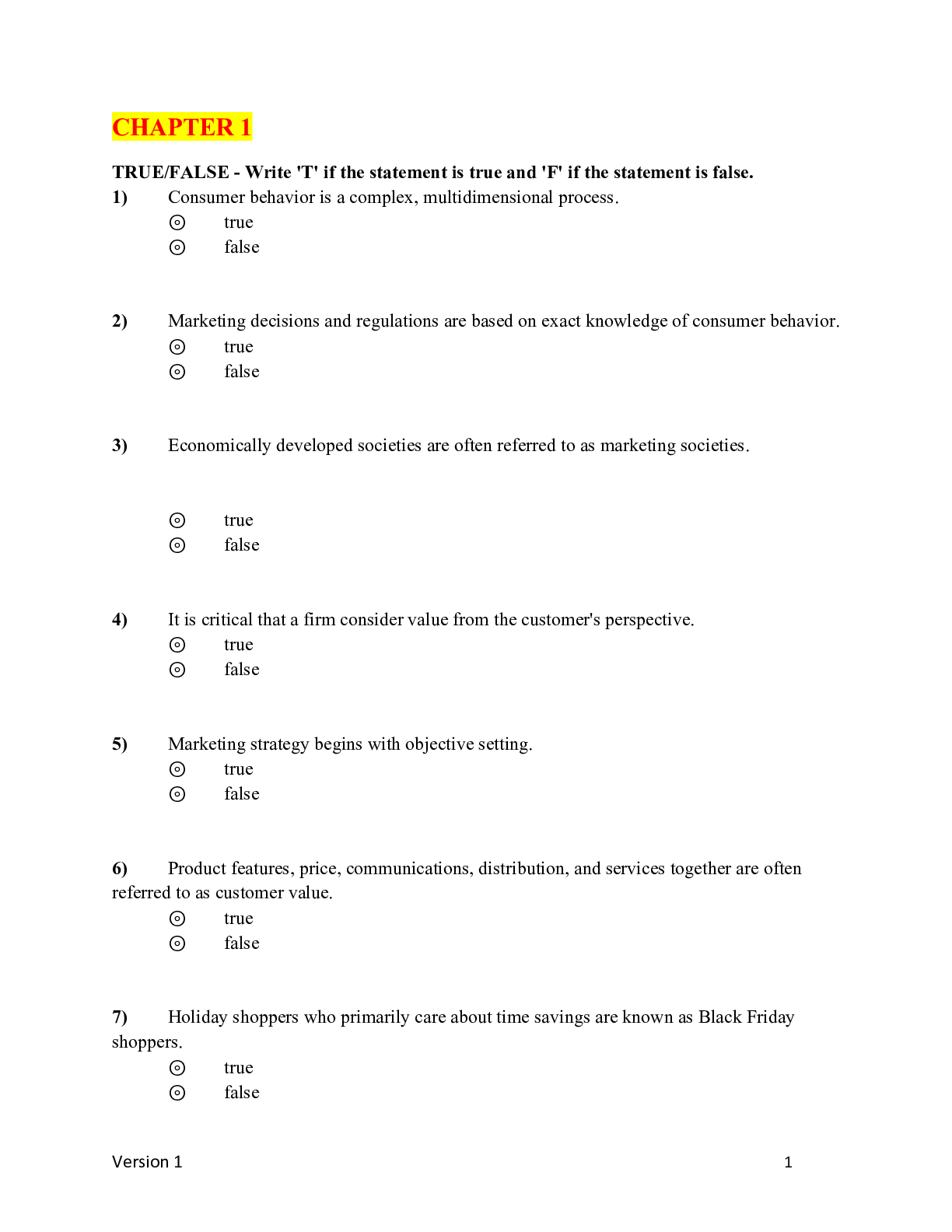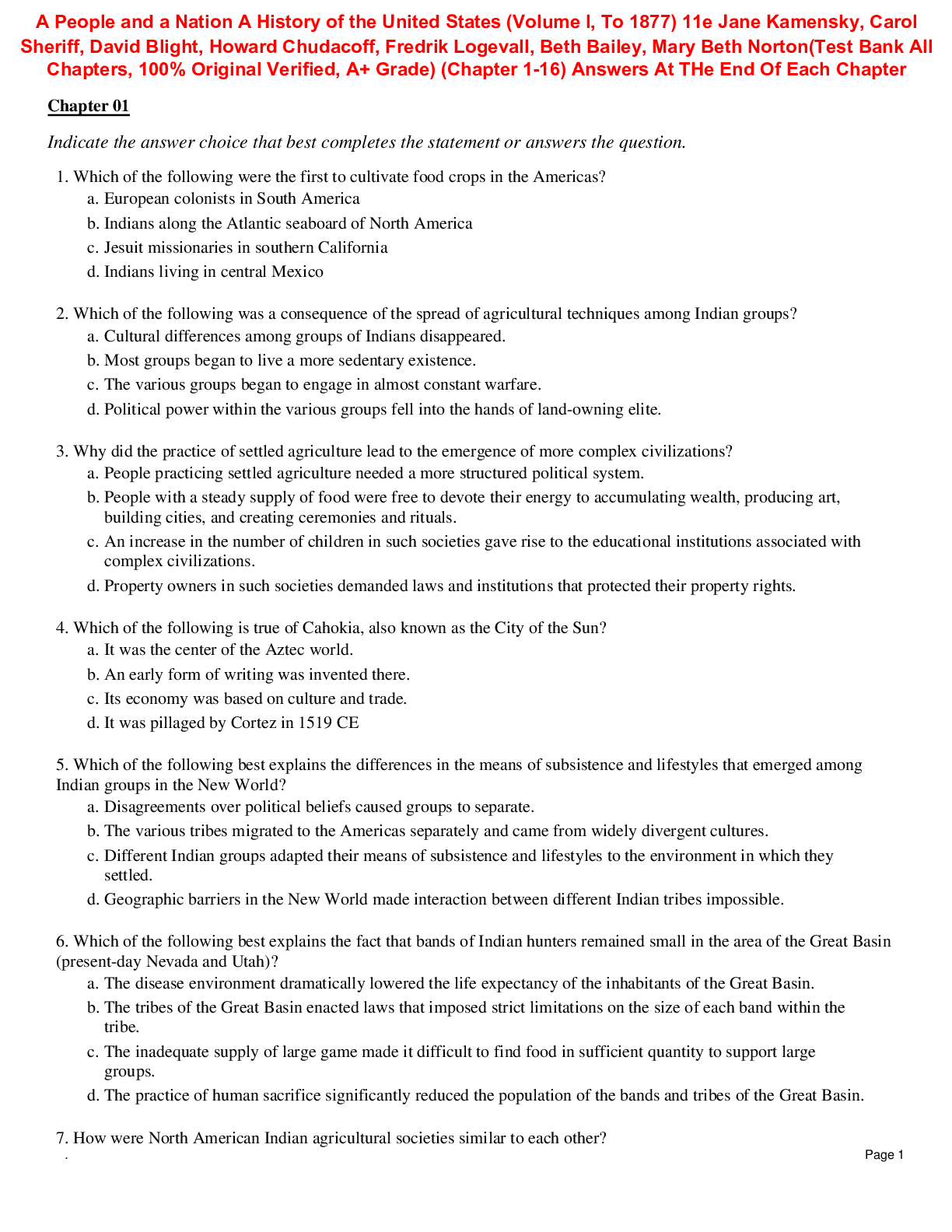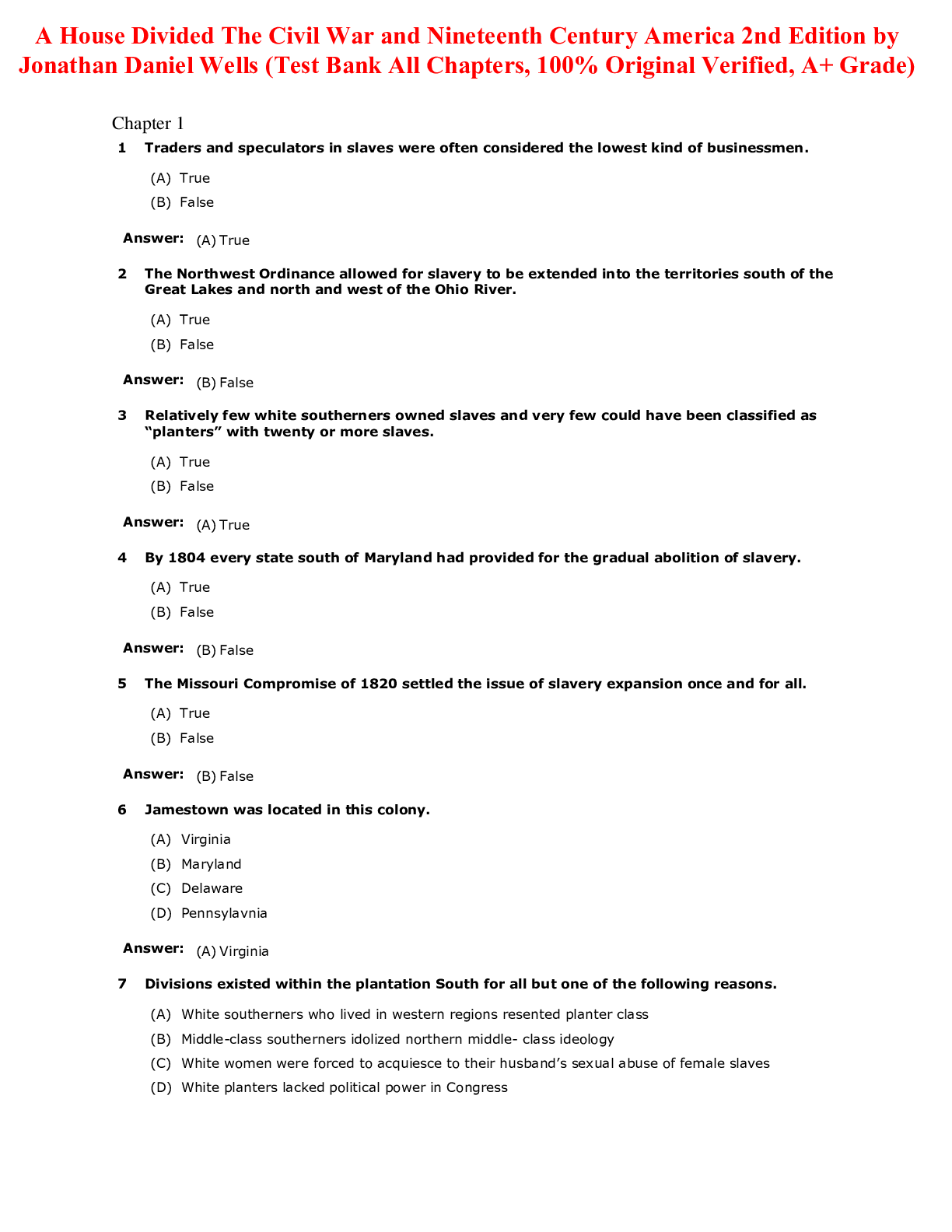TestBank-Introduction-Critical-Care-Nursing-7th-Sole COMPLETE
Document Content and Description Below
Table of Contents Table of Contents Chapter 01: Overview of Critical Care Nursing Chapter 02: Patient and Family Response to the Critical Care Experience Chapter 03: Ethical and Legal Issues in Cr... itical Care Nursing Chapter 04: Palliative and End-of-Life Care Chapter 05: Comfort and Sedation Chapter 06: Nutritional Therapy Chapter 07: Dysrhythmia Interpretation and Management Chapter 08: Hemodynamic Monitoring Chapter 09: Ventilatory Assistance Chapter 10: Rapid Response Teams and Code Management Chapter 11: Organ Donation Chapter 12: Shock, Sepsis, and Multiple Organ Dysfunction Syndrome Chapter 13: Cardiovascular Alterations Chapter 14: Nervous System Alterations Chapter 15: Acute Respiratory Failure Chapter 16: Acute Kidney Injury Chapter 17: Gastrointestinal Alterations Chapter 17: Hematological and Immune Disorders Chapter 19: Endocrine Alterations Chapter 20: Trauma and Surgical Management Chapter 21: Burns Test Bank - Introduction to Critical Care Nursing 7e (Sole 2016) 1Chapter 01: Overview of Critical Care Nursing MULTIPLE CHOICE 1. Which of the following professional organizations best supports critical care nursing practice? a. American Association of Critical-Care Nurses b. American Heart Association c. American Nurses Association d. Society of Critical Care Medicine ANS: A The American Association of Critical-Care Nurses is the specialty organization that supports and represents critical care nurses. The American Heart Association supports cardiovascular initiatives. The American Nurses Association supports all nurses. The Society of Critical Care Medicine represents the multiprofessional critical care team under the direction of an intensivist. DIF: Cognitive Level: Knowledge REF: p. 4 OBJ: Discuss the purposes and functions of the professional organizations that support critical care practice. TOP: Nursing Process Step: N/A MSC: NCLEX: Safe and Effective Care Environment 2. A nurse has been working as a staff nurse in the surgical intensive care unit for 2 years and is interested in certification. Which credential would be most applicable for her to seek? a. ACNPC b. CCNS c. CCRN d. PCCN ANS: C The CCRN certification is appropriate for nurses in bedside practice who care for critically ill patients. The ACNPC certification is for acute care nurse practitioners. The CCNS certification is for critical care clinical nurse specialists. The PCCN certification is for staff nurses working in progressive care, intermediate care, or step-down unit settings. DIF: Cognitive Level: Application REF: p. 5 OBJ: Explain certification options for critical care nurses. TOP: Nursing Process Step: N/A MSC: NCLEX: Safe and Effective Care Environment Test Bank - Introduction to Critical Care Nursing 7e (Sole 2016) 23. The main purpose of certification is to: a. assure the consumer that you will not make a mistake. b. prepare for graduate school. c. promote magnet status for your facility. d. validate knowledge of critical care nursing. ANS: D Certification assists in validating knowledge of the field, promotes excellence in the profession, and helps nurses to maintain their knowledge of critical care nursing. Certification helps to assure the consumer that the nurse has a minimum level of knowledge; however, it does not ensure that care will be mistake-free. Certification does not prepare one for graduate school; however, achieving certification demonstrates motivation for achievement and professionalism. Magnet facilities are rated on the number of certified nurses; however, that is not the purpose of certification. DIF: Cognitive Level: Analysis REF: pp. 4-5 OBJ: Explain certification options for critical care nurses. TOP: Nursing Process Step: N/A MSC: NCLEX: Safe and Effective Care Environment 4. The synergy model of practice focuses on: a. allowing unrestricted visiting for the patient 24 hours each day. b. holistic and alternative therapies. c. needs of patients and their families, which drives nursing competency. d. patients needs for energy and support. ANS: C The synergy model of practice states that the needs of patients and families influence and drive competencies of nurses. Nursing practice based on the synergy model would involve tailored visiting to meet the patients and familys needs and application of alternative therapies if desired by the patient, but that is not the primary focus of the model. DIF: Cognitive Level: Application REF: p. 5 | Fig. 1-3 OBJ: Describe standards of professional practice for critical care nursing. TOP: Nursing Process Step: N/A MSC: NCLEX: Safe and Effective Care Environment 5. The family of your critically ill patient tells you that they have not spoken with the physician in over 24 hours and they have some questions that they want clarified. During morning rounds, you convey this concern to the attending intensivist and arrange for her to meet with the family at 4:00 PM in the conference room. Which competency of critical care nursing does this represent? Test Bank - Introduction to Critical Care Nursing 7e (Sole 2016) 3a. Advocacy and moral agency in solving ethical issues b. Clinical judgment and clinical reasoning skills c. Collaboration with patients, families, and team members d. Facilitation of learning for patients, families, and team members ANS: C Although one might consider that all of these competencies are being addressed, communication and collaboration with the family and physician best exemplify the competency of collaboration. DIF: Cognitive Level: Analysis REF: p. 9 OBJ: Describe standards of professional practice for critical care nursing. TOP: Nursing Process Step: N/A MSC: NCLEX: Safe and Effective Care Environment 6. The AACN Standards for Acute and Critical Care Nursing Practice use what framework to guide critical care nursing practice? a. Evidence-based practice b. Healthy work environment c. National Patient Safety Goals d. Nursing process ANS: D The AACN Standards for Acute and Critical Care Nursing Practice delineate the nursing process as applied to critically ill patients: collect data, determine diagnoses, identify expected outcomes, develop a plan of care, implement interventions, and evaluate care. AACN promotes a healthy work environment, but this is not included in the Standards. The Joint Commission has established National Patient Safety Goals, but these are not the AACN Standards. DIF: Cognitive Level: Analysis REF: p. 5 | Box 1-2 OBJ: Describe standards of professional practice for critical care nursing. TOP: Nursing Process Step: N/A MSC: NCLEX: Safe and Effective Care Environment 7. The charge nurse is responsible for making the patient assignments on the critical care unit. She assigns the experienced, certified nurse to care for the acutely ill patient with sepsis who also requires continuous renal replacement therapy and mechanical ventilation. She assigns the nurse with less than 1 year of experience to two patients who are more stable. This assignment reflects implementation of the: a. crew resource management model Test Bank - Introduction to Critical Care Nursing 7e (Sole 2016) 4b. National Patient Safety Goals c. Quality and Safety Education for Nurses (QSEN) model d. synergy model of practice ANS: D This assignment demonstrates nursing care to meet the needs of the patient. The synergy model notes that the nurse competencies are matched to the patient characteristics. Crew resource management concepts related to team training, National Patient Safety Goals are specified by The Joint Commission to promote safe care but do not incorporate the synergy model. The Quality and Safety Education for Nurses initiative involves targeted education to undergraduate and graduate nursing students to learn quality and safety concepts. DIF: Cognitive Level: Analysis REF: p. 5 | Fig. 1-3 OBJ: Describe standards of professional practice for critical care nursing. TOP: Nursing Process Step: N/A MSC: NCLEX: Safe and Effective Care Environment 8. The vision of the American Association of Critical-Care Nurses is a healthcare system driven by: a. a healthy work environment. b. care from a multiprofessional team under the direction of a critical care physician. c. the needs of critically ill patients and families. d. respectful, healing, and humane environments. ANS: C The AACN vision is a healthcare system driven by the needs of critically ill patients and families where critical care nurses make their optimum contributions. AACN promotes initiatives to support a healthy work environment as well as respectful and healing environments, but that is not the organizations vision. The SCCM promotes care from a multiprofessional team under the direction of a critical care physician. DIF: Cognitive Level: Knowledge REF: p. 4 OBJ: Discuss the purposes and functions of the professional organizations that support critical care practice. TOP: Nursing Process Step: N/A MSC: NCLEX: Safe and Effective Care Environment 9. The most important outcome of effective communication is to: a. demonstrate caring practices to family members. b. ensure that patient teaching is done. c. meet the diversity needs of patients. Test Bank - Introduction to Critical Care Nursing 7e (Sole 2016) 5d. reduce patient errors. ANS: D Many errors are directly attributed to faulty communication. Effective communication has been identified as an essential strategy to reduce patient errors and resolve issues related to patient care delivery. Communication may demonstrate caring practices, be used for patient/family teaching, and address diversity needs; however, the main outcome of effective communication is patient safety. DIF: Cognitive Level: Knowledge REF: pp. 8-9 OBJ: Describe quality and safety initiatives related to critical care nursing. TOP: Nursing Process Step: N/A MSC: NCLEX: Safe and Effective Care Environment 10. You are caring for a critically ill patient whose urine output has been low for 2 consecutive hours. After a thorough patient assessment, you call the intensivist with the following report. Dr. Smith, Im calling about Mrs. P., your 65-year-old patient in CCU 10. Her urine output for the past 2 hours totaled only 40 mL. She arrived from surgery to repair an aortic aneurysm 4 hours ago and remains on mechanical ventilation. In the past 2 hours, her heart rate has increased from 80 to 100 beats per minute and her blood pressure has decreased from 128/82 to 100/70 mm Hg. She is being given an infusion of normal saline at 100 mL per hour. Her right atrial pressure through the subclavian central line is low at 3 mm Hg. Her urine is concentrated. Her BUN and creatinine levels have been stable and in normal range. Her abdominal dressing is dry with no indication of bleeding. My assessment suggests that Mrs. P. is hypovolemic and I would like you to consider increasing her fluids or giving her a fluid challenge. Using the SBAR model for communication, the information the nurse gives about the patients history and vital signs is: [Show More]
Last updated: 11 months ago
Preview 1 out of 392 pages
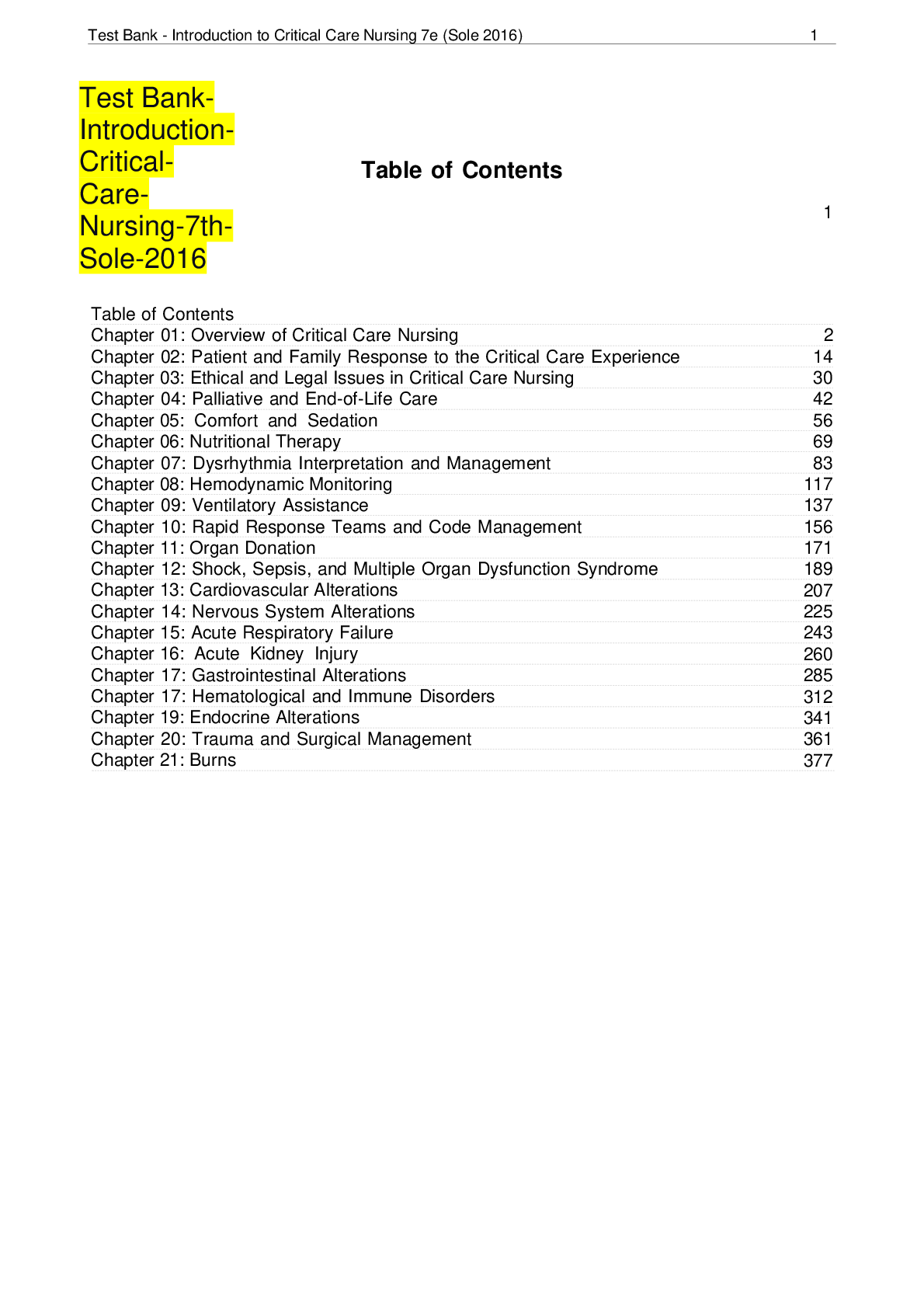
Reviews( 0 )
Document information
Connected school, study & course
About the document
Uploaded On
Sep 12, 2021
Number of pages
392
Written in
Additional information
This document has been written for:
Uploaded
Sep 12, 2021
Downloads
0
Views
43


.png)

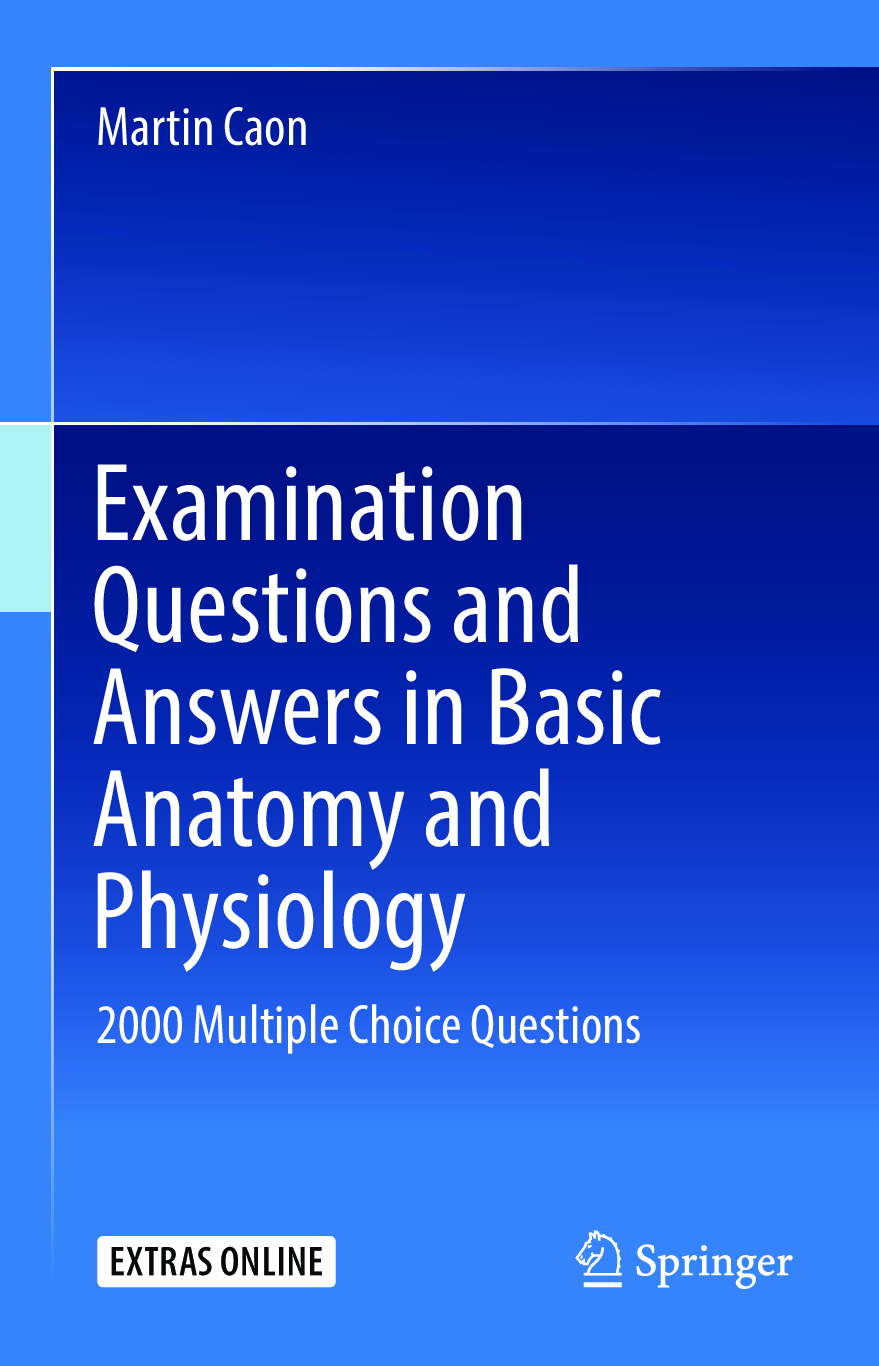
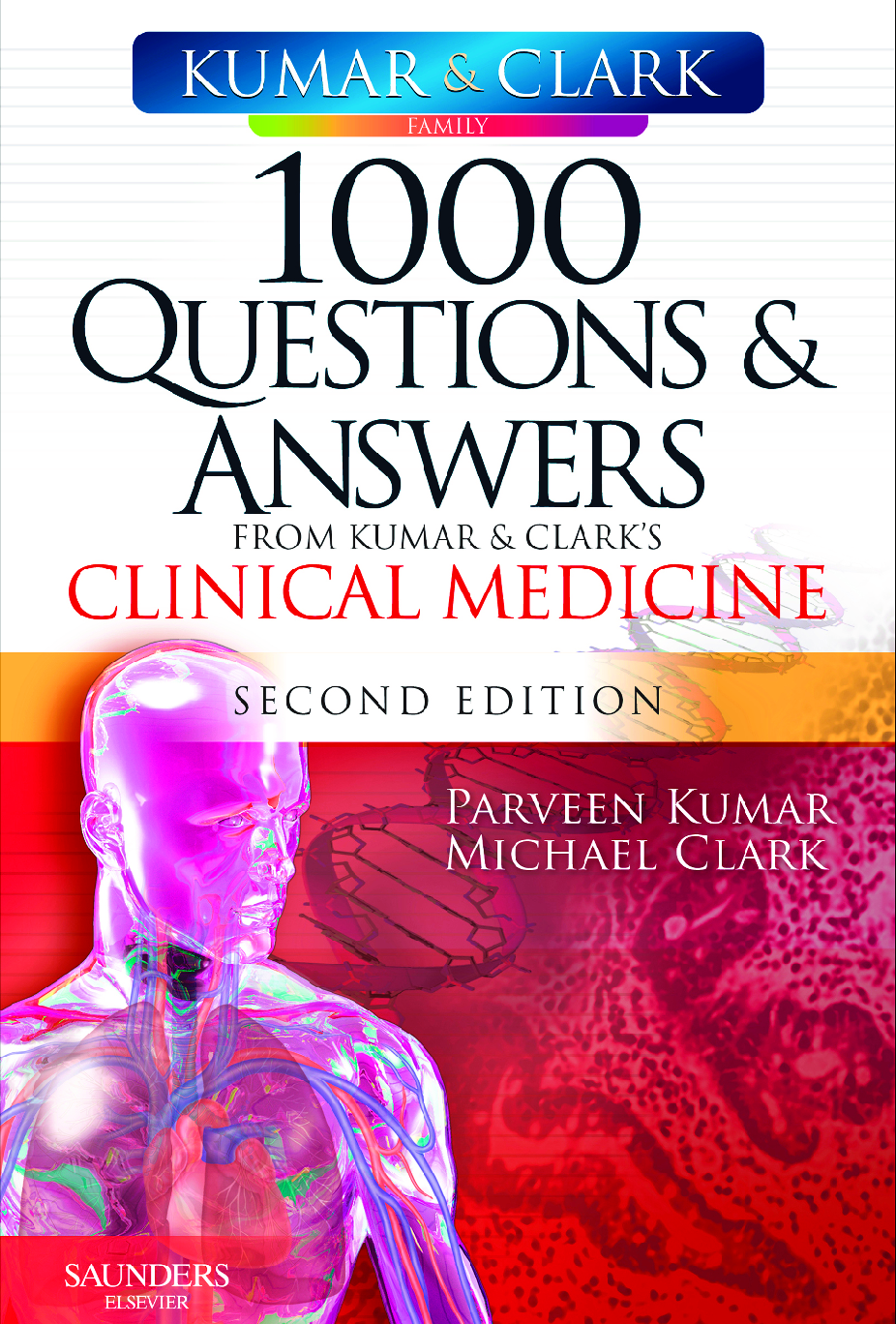
.png)
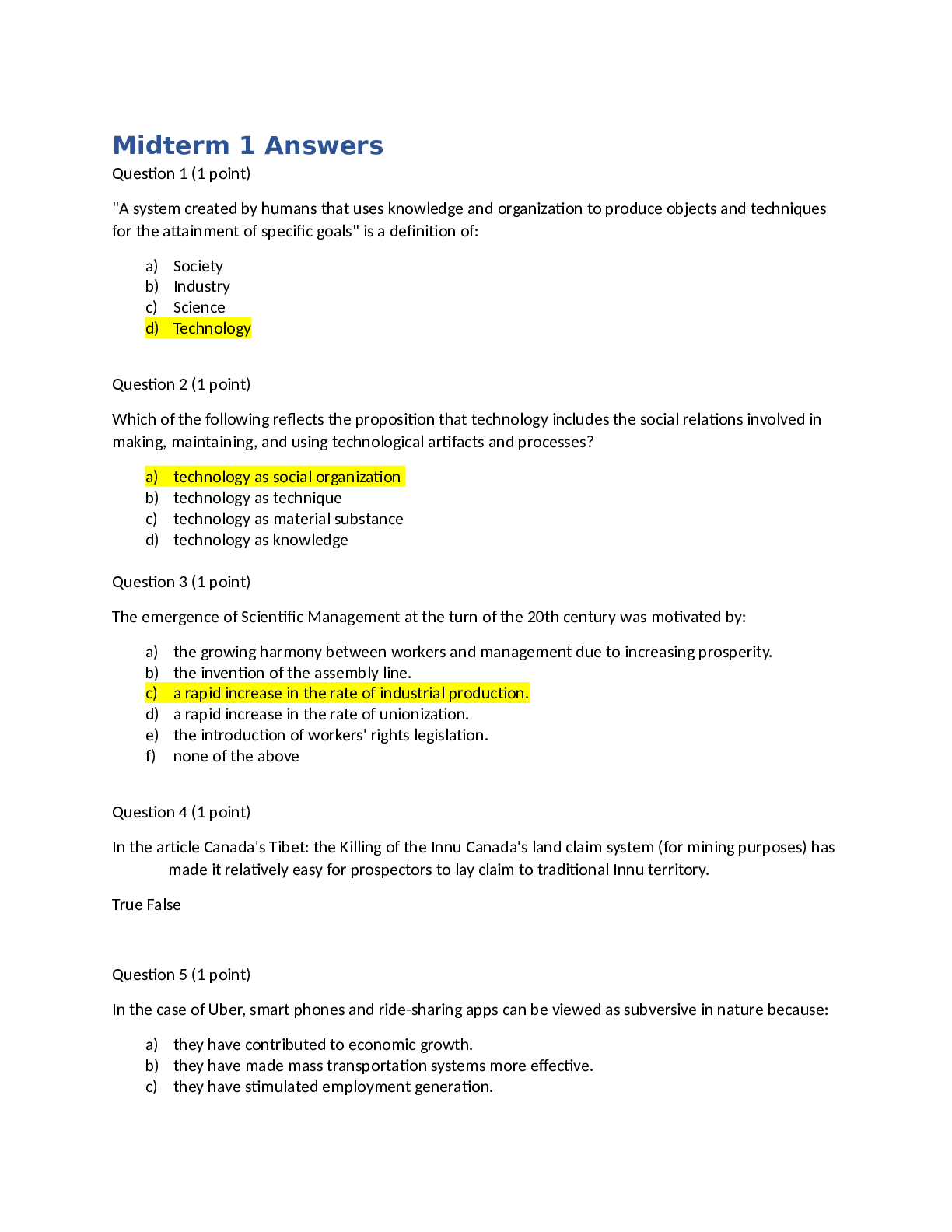


 David L.png)
.png)
